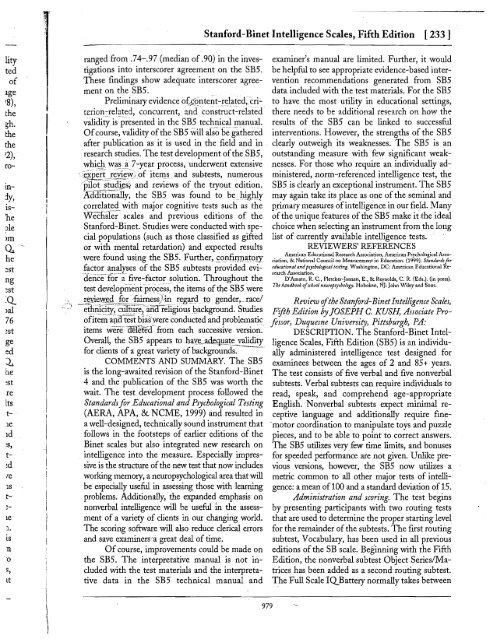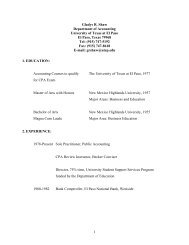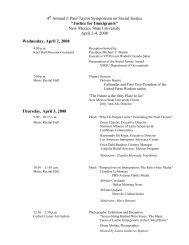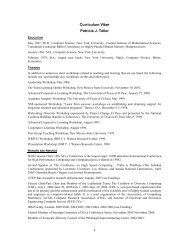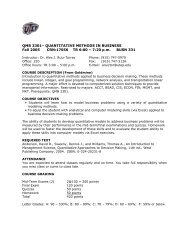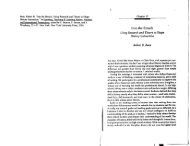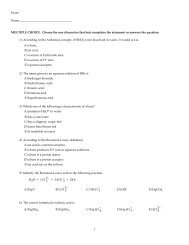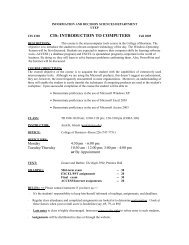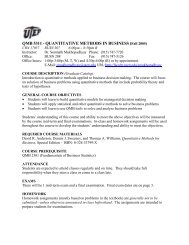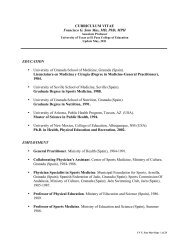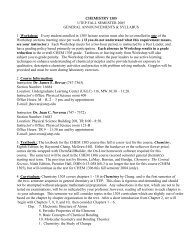Stanford-Binet Intelligence Scales, Fifth Edition ... - Faculty.utep.edu
Stanford-Binet Intelligence Scales, Fifth Edition ... - Faculty.utep.edu
Stanford-Binet Intelligence Scales, Fifth Edition ... - Faculty.utep.edu
You also want an ePaper? Increase the reach of your titles
YUMPU automatically turns print PDFs into web optimized ePapers that Google loves.
litytedof1ge18),thegh.thethe'2),roranged from .74-.97 (median of .90) in the investigationsinto interscorer agreement on the SB5.These findings show adequate inters corer agreementon the SB5.Preliminary evidence o(£qntent:-related,'criterion...re1ated,concurrent, and construct-relatedvaliditY is presented in the SB5 technical manual.Ofcourse, validity ofthe SB5 will alsob~g~then:dafter publication as it is used in the field and inresearch studies. The test development ofthe SB5,<strong>Stanford</strong>-<strong>Binet</strong> <strong>Intelligence</strong> <strong>Scales</strong>, <strong>Fifth</strong> <strong>Edition</strong> [233)examiner's manual are limited. Further, it wouldbe helpful to see appropriate evidence-based interventionrecommendations generated from SB5data included with the test materials. For the SB5to have the most utility in <strong>edu</strong>cational settings,there needs to be additional research on how theresults of the SB5 can be linked to successfulinterventions. However, the strengths of the SB5. clearly outweigh its' weaknesses. The SB5 is anoutstanding measure with few significant weak.nesses. For those who require an individually administered,norm-referenced intelligence test, theSB5 is clearly an exceptional instrument. The SB5may again take its place as one of the seminal andgrimary measures ofintelligence in our field. Manyofthe unique features of the SB5 make it the idealchoice when selecting an instrument from the longlist of currently available intelligence tests.REVIEWERS'REFERENCESAmerican Educational Research Association, American Psychological Association,& National Council on Measurement in Education. (1999). Standards for<strong>edu</strong>cational andpsych.logical /(Sting. Washington, DC: American Educational ResearchAssociation.D'Am.to, R.. C" Fletcher-Jamon, E., & Reynolds, C, R. (Eds.). (in press).The handoooJ. ofschool neuropsy,hology. Hoboken, NJ: John Wiley and Sons.wlll.9 w.il_~,~ 7 -ye:u process, underwent extensive'::*~f!.F~vie"').of iteIIls and subtests, numerousmpilot studi~s~ and reviews of the tryout edition.:iy,ISheDIe>mC2.,.he~stng}t(lditionauy, the SB5 was found to beJlighlyc:orrelat~~_with major cognitive tt:sts such as theweChsler scales and previous . editions of the<strong>Stanford</strong>-<strong>Binet</strong>. Studies were conducted with specialpopulations (such as those classified as giftedor with mental retardation) and expected resultswere found using the SB5. Further, s()I1fif1I1!l:!()!Yfactor analyses of the SB5 subtests provided evidence'lor'afive-factor solution. Throughout the~sttest developmentpr()cess, the items of the SB5 were:Q_~yie:w~~Lfuf..;,fairnessJ1nrega!aleiliii!City;curtjije;~anare1igious .... b~ckground. Studies <strong>Fifth</strong> <strong>Edition</strong> byJOSEPH C. KUSH, Associate Pro76 ofitem-9.iia"test bli~were conducted and problematic fessor, Duquesne University, Pittsburgh, PA:!st I items were'1ffife'ted from each successive version. DESCRIPTION. The <strong>Stanford</strong>-<strong>Binet</strong> IntelgeOverall, the SB5 appears tohay~~ade.qY::t~~yalidity ligence <strong>Scales</strong>, <strong>Fifth</strong> <strong>Edition</strong> (SB5) is an individuforclients of a great variety of backgrounds..---.....,.. ally administered intelligence test designed fored~COMMENTS AND SUMMARY. The SB5 examinees between the ages of 2 and 85+ years.heis the long-awaited revision of the <strong>Stanford</strong>-<strong>Binet</strong> The test consists of five verbal and five nonverbal:st4 and the publication of the SB5 was worth the subtests. Verbal subtests can require individuals toIewait. The test development process followed the read, speak, and comprehend age-appropriateltsStandards for Educational and Psychological Testing English. Nonverbal subtests expect minimal ret(AERA, APA, & NCME, 1999) and resulted in ceptive language and additionally require fmea:lewell-designed, technically sound instrument that -motor coordination to manipulate toys and puzzleIdfollows in the footsteps of earlier editions of the pieces, and to be able to point to correct answers.$,<strong>Binet</strong> scales but also integrated new research on The SB5 utilizes very few time limits, and bonusest.. intelligence into the measure. Especially impres for speeded performance are not given. Unlike pre;..~dsive is the structure ofthe new test that now includes vious versions, however, the SB5 now utilizes aIeworking memory, a neuropsychological area that will metric common to all other major tests of intellibe:lSespecially useful in assessing those with learning gence: a mean 0[100 and a standard deviation of15.tproblems. Additionally, the e;,q>anded emphasis on Administration and scoring. The test begins~-nonverbal intelligence will be useful in the assess by presenting participants With two routing testslement of a variety of clients in oUr changing world. that are used to determine the proper starting level1.The scoring software will also r<strong>edu</strong>ce clerical errors for the remainder ofthe subtests. The first routingLSand save examiners"a great deal of time.sub test, Vocabulary, has been used in all previousnOfcourse, improvements could be made on editions ofthe SB scale. Beginning with the <strong>Fifth</strong>'0the SB5. The interpretative manual is not in <strong>Edition</strong>, the nonverbal subtest Object SerieslMa:"s,cluded with the test materials and the interpreta trices has been added as a second routing subtest.Ittive data in the SB5 technical manual and The Full Scale IQBattery normally takes betweeniI\)979


